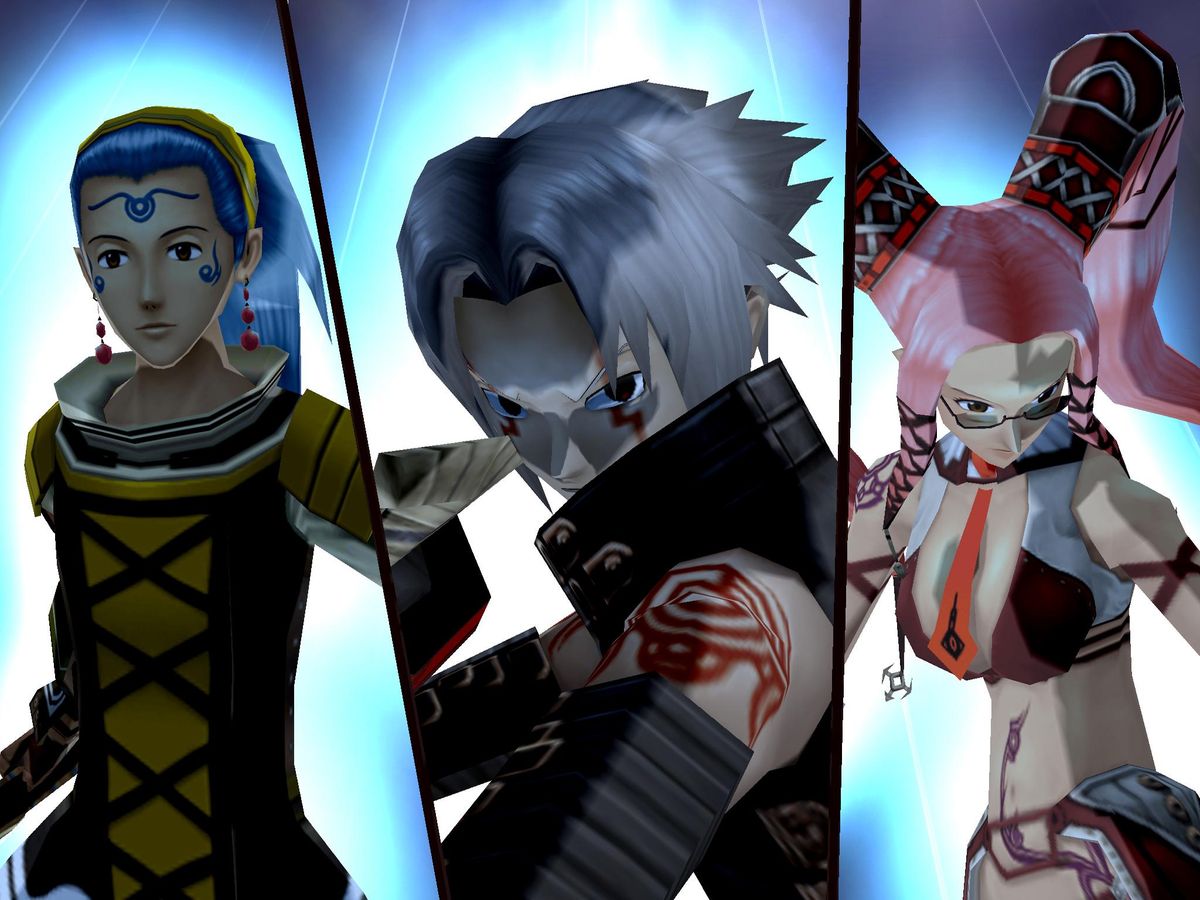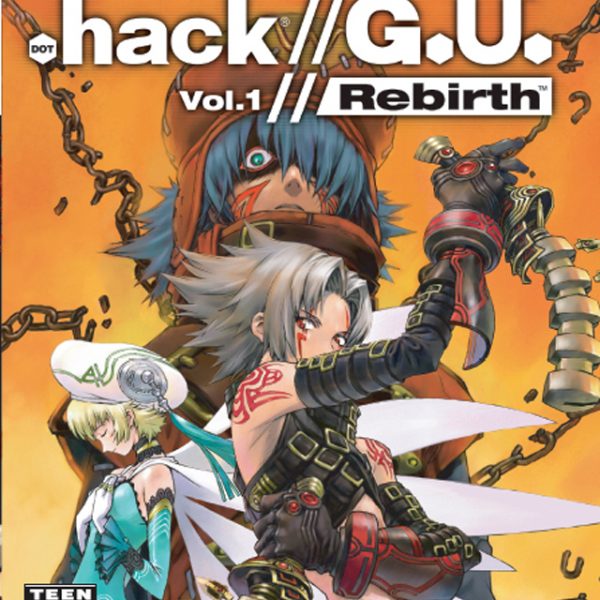
The world needs a hero! Z.H.P. Unlosing Ranger VS Darkdeath Evilman.
August 7, 2022
Princess Debut is fun for all ages and preferred pronouns.
August 21, 2022The World is back: .hack//G.U. vol. 1//Rebirth.
Not too long after it released in the states, I finished .hack//Infection on the PlayStation 2. It had the heart and soul of something epic. There was a lot of ambition behind it, but also a lot of monotony. I had no desire to see what happened after I finished it. Separating one game into four parts just wasn’t a good idea. My point? I had really low expectations for my return to The World in .hack//G.U. The first volume, Rebirth, reminded me of all that ambition I initially saw from the original series. But, was it enough to see the game through to the end? More importantly, was it enough to make me want to see what happened in the later volumes?
Gamers return to the .hack setting of The World: a popular MMO developed by Cyber Connect. In this saga, we take control of a hot-headed, somewhat edgy youth named Haseo. Haseo’s gamer persona in The World is infamous. He roams the game as a PKK: a player-killer killer. In other words, he kills players that make a habit of killing other, innocent players. He does this in the hopes that it will lead him to another PKK named Tri-Edge. Tri-Edge PKK’d one of Haseo’s friends that caused her to fall into a coma outside of the game. Haseo has his work cut out for him because The World and its creators have plenty of secrets behind all the 1s and 0s.
Really, the story is the game’s best part. Nine times out of ten it doesn’t feel like you’re playing as someone playing an MMO. Instead, it feels like another fantasy RPG. This isn’t a bad thing. It just makes you go, “Oh wait. This isn’t real.” when you log-out of The World and return to Haseo’s desktop. His computer adds extra layers of story. You’ll learn about other The World players entering comas, space expeditions, news in pop culture, and more. You’ll also be able check Haseo’s email and his favorite message boards. All this makes the setting of .hack feel real. Unfortunately, the game has an issue with pacing. The problem is twofold. First, there’s a lot of filler between the exciting story moments. Haseo’s mission gets put on hold so he can fulfill silly requests to just to reach the next plot point. The other problem is that most story events can’t be manually advanced. You’re stuck, listening to every spoken word. Think of something like Final Fantasy X. The story moments can be paused and/or skipped, but it still doesn’t make up for not being able to read them at your own pace. I’m a fast reader and I found myself constantly getting impatient with story sequence not wrapping up.

If you have any familiarity with Kite and Black Rose’s experience, then you shouldn’t have much trouble acclimating to Haseo’s. The World consists of towns where you can chat and trade items with other players. There are also shops, guilds, and folks that offer rewards for various side-jobs. Each town is connected to a gate and server. During Haseo’s journey, he’ll acquire keywords that can be strung together to go to dungeons. Most of these come from advancing the story. However, you can combine words on your own to make your own dungeon. About one quarter of the way through the journey, Haseo will acquire a bike. This makes traveling through both towns and dungeons swifter, and a hell of a lot more fun. Again, it feels more like another RPG instead of a game taking place in an MMO game.
The biggest difference between the G.U. saga and the original is the combat. Haseo and up to two friends will encounter groups of enemies and enter a battle zone. From there, it’s full-on, button-mashing, action RPG goodness. You take control of Haseo and the AI will cover his friends. You can perform regular attacks, charge attacks, and special attacks assigned up to four shortcuts. Your weapons and armor can be customized for additional effects. As enemies take their beatings, they’ll eventually get a purple aura around them. Using one of Haseo’s specials during this time will cause a Rengeki (連撃). Not only does this increase the power of the special attack used, but it fills up the Morale Meter. Haseo can unleash a devastating attack on all enemies when the Morale Meter is full. It’s pretty mindless, but still a good time. The only time there’s a semblance of challenge is when an enemy level is about five or more greater than Haseo’s. Since equipment has a level requirement, Haseo has to be a certain level before he can equip the latest and greatest gear. Otherwise, this is a super easy game. Eventually, Haseo can equip a broadsword (he starts with dual daggers) for even more options. And when you unlock Avatar Battles (think of Zone of the Enders) a new level of action packed fun begins.

The version of Rebirth I played was the remastered version for the Switch/PlayStation 4. It’s clear that this used to be a PlayStation 2 game, for better or worse. The character graphics got an HD upgrade and the areas have more crispness. There’s a lot of unique models, enemies, and special effects. The movies are where the game really shines. While few and far between, they’re blockbuster levels of epic and tons of fun. On the downside, the areas you explore outside of the towns are dull and repetitive. They’re so empty that they reach levels of uninspiring. The music fares better. Every track is either catchy or easy to listen to. The voice acting is solid whether you select the Japanese or English options. But, since most story scenes can’t be manually advanced, you’ll need to get used to hearing your characters speak a lot. This is one of those games where everyone has to get their two-cents in.
So. To hack or not to hack? Obviously, if you enjoyed Infection and the games that followed, then yes. If you didn’t care for them, then you still might find something enjoyable in the G.U. saga. At least, with this first chapter. Remember, once the game ends (after about 30 or so hours) there’s lots more to go before the story concludes. I’m interested in seeing what happens next in volume 2, but I’m going in with caution because I’m expecting more filler story moments and more of the same bland environments. A good story can only carry a game (or games, in this case) for so long before tedium sets in. But, for now, I’m pleased with .hack//G.U. The game finishes on a cliffhanger that really has me excited for what’s next. I just hope I can retain that momentum.
Overall, 7/10: On it’s own, .hack//G.U. vol. 1//Rebirth is a decent action-RPG with an interesting premise. On the whole, it’s tough to gauge whether or not it’s worth jumping into.





